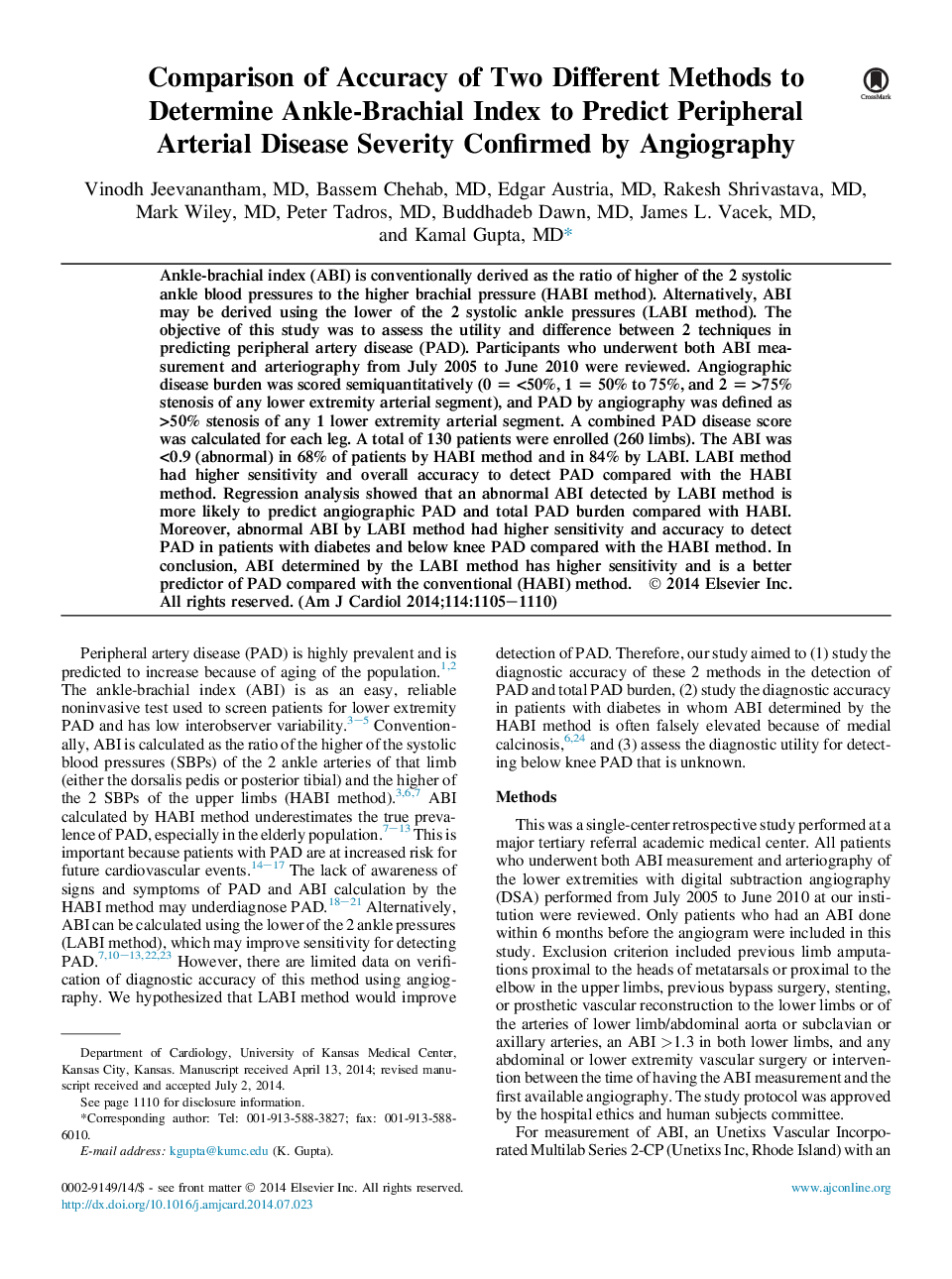| Article ID | Journal | Published Year | Pages | File Type |
|---|---|---|---|---|
| 2854591 | The American Journal of Cardiology | 2014 | 6 Pages |
Ankle-brachial index (ABI) is conventionally derived as the ratio of higher of the 2 systolic ankle blood pressures to the higher brachial pressure (HABI method). Alternatively, ABI may be derived using the lower of the 2 systolic ankle pressures (LABI method). The objective of this study was to assess the utility and difference between 2 techniques in predicting peripheral artery disease (PAD). Participants who underwent both ABI measurement and arteriography from July 2005 to June 2010 were reviewed. Angiographic disease burden was scored semiquantitatively (0 = <50%, 1 = 50% to 75%, and 2 = >75% stenosis of any lower extremity arterial segment), and PAD by angiography was defined as >50% stenosis of any 1 lower extremity arterial segment. A combined PAD disease score was calculated for each leg. A total of 130 patients were enrolled (260 limbs). The ABI was <0.9 (abnormal) in 68% of patients by HABI method and in 84% by LABI. LABI method had higher sensitivity and overall accuracy to detect PAD compared with the HABI method. Regression analysis showed that an abnormal ABI detected by LABI method is more likely to predict angiographic PAD and total PAD burden compared with HABI. Moreover, abnormal ABI by LABI method had higher sensitivity and accuracy to detect PAD in patients with diabetes and below knee PAD compared with the HABI method. In conclusion, ABI determined by the LABI method has higher sensitivity and is a better predictor of PAD compared with the conventional (HABI) method.
